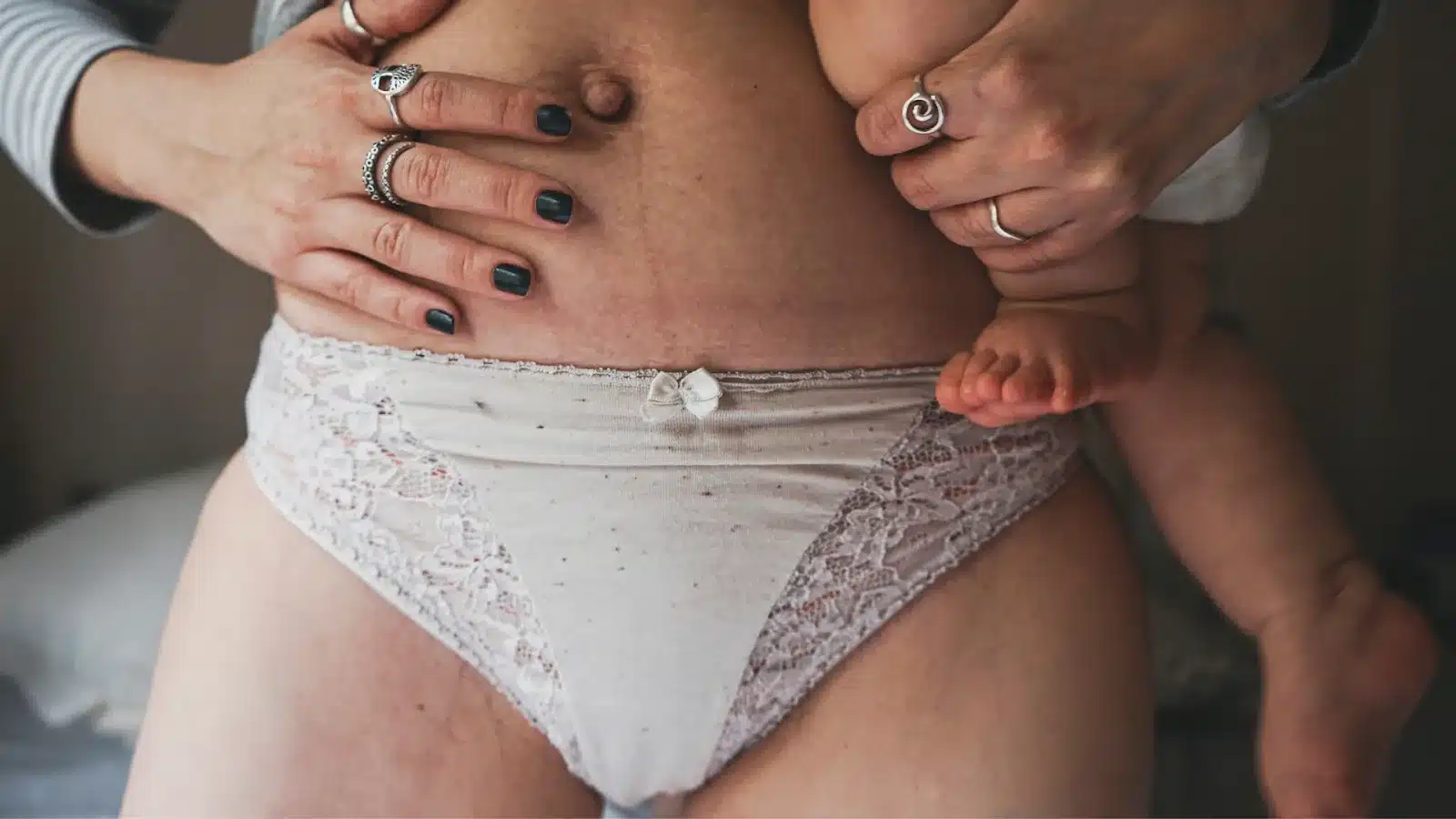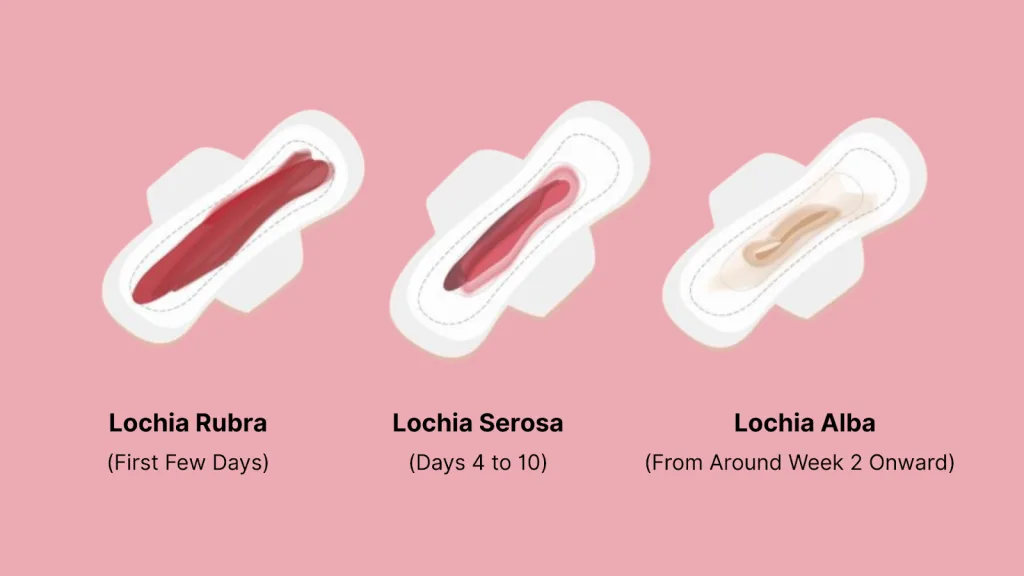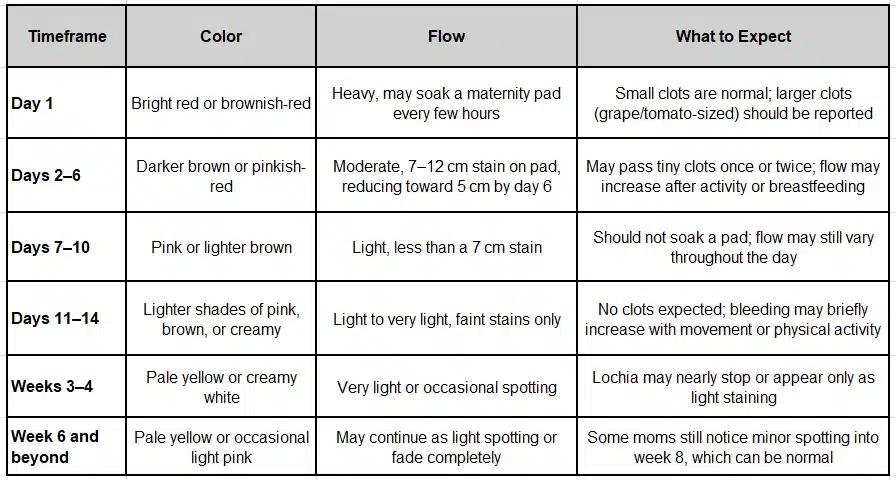Postpartum Bleeding: What’s Normal and When to Seek Help

You spend months preparing for labor, packing the hospital bag, choosing a name, and picturing those first moments with your baby. But once you’re home, your body begins its own quiet, remarkable work of recovery. Part of that healing is the bleeding that follows. It can feel unfamiliar and sometimes unsettling, especially when you’re already adjusting to so many changes at once.
You might even find yourself wondering, ‘Is this my period already?‘
If you’re asking that, you’re not alone. So many of us do. Postpartum bleeding isn’t something people talk about openly. But it should be, because knowing what’s normal, what’s not, and when to reach out for help can make this phase feel less overwhelming.
Let’s talk about postpartum bleeding, openly and with care, in this Mama Talk.
Key Takeaways:
- Postpartum bleeding is a natural process of shedding blood and tissue after birth.
- It follows three stages: heavy red, then pink/brown, and finally yellow/white.
- Consult a doctor if bleeding is heavy, with large clots, or if symptoms like fever or dizziness occur.
- Rest, hydration, and the right pads support recovery. Don’t hesitate to seek help.
What Is Postpartum Bleeding?
After giving birth, your body begins a quiet but important process of healing. One of the first signs of that healing is something called postpartum bleeding, or lochia. It’s completely normal, though it can catch many new moms off guard.
Lochia is how your body clears out the blood, tissue, and mucus that lined your uterus during pregnancy. It is not your period, though it can look or feel like one. This happens whether you had a vaginal birth or a C-section.
Postpartum bleeding usually moves through three stages:

- Lochia rubra (first few days): Bright or dark red, heavier flow, with small clots
- Lochia serosa (days 4 to 10): Lighter, pink or brown, with a thinner texture
- Lochia alba (from around week 2 onward): Pale yellow or creamy white, light or spotty
These stages may overlap or shift day to day. Every recovery is different, but knowing what’s typical can help you feel more at ease with the changes.
What It Can Look Like: Symptoms and What’s Normal
The color, flow, and timing of postpartum bleeding can look different for every mom. What feels typical for one might seem unusual for another. Still, understanding the general pattern of how lochia changes over time can make the experience feel a little less uncertain.
Here’s a simple guide to what you might see in the first few weeks:

Note: If you suddenly experience bright red bleeding again after it had stopped, it could be your first postpartum period, or something worth checking in about.
What Causes Postpartum Bleeding?

One of the most important parts of the healing process after delivery happens in the uterus, where the placenta was once attached. That area is still recovering, and some bleeding is part of that natural repair.
Let’s take a closer look at what can cause that bleeding, and why it may sometimes become heavier than expected.
The Four Main Causes of Postpartum Bleeding
Most of the time, postpartum bleeding follows a healthy rhythm. But when it doesn’t, doctors look at four main causes, often called the Four Ts. You don’t need to remember the names, but it helps to understand what your care team is checking for if things feel off.
Here’s a gentle breakdown:
- Tone: If the uterus isn’t firm enough after birth, it may not contract properly, which can lead to more bleeding.
- Trauma: Sometimes, small tears or bruises from delivery (even ones you can’t see) can keep bleeding if they haven’t healed yet.
- Tissue: In some cases, a small piece of the placenta stays behind in the uterus, which can prevent the body from fully healing.
- Thrombin: This has to do with how your blood clots. If your body has a clotting issue, such as a bleeding disorder or low platelet levels, it might not stop the bleeding as it should. In some cases, this can lead to heavier or prolonged bleeding after birth.
If your provider ever mentions these causes, it’s just their way of narrowing things down and making sure your body is recovering as it should.
When to Call Your Doctor?

It’s normal to have questions about what’s okay and what’s not after giving birth, especially when it comes to bleeding. Your body is doing a lot, and things can feel unfamiliar. But if something feels off, it’s more than okay to ask for help.
In rare cases, very heavy bleeding may be a sign of postpartum hemorrhage, a serious condition that needs immediate attention. It often happens within the first 24 hours after birth, but can sometimes appear later. If you experience heavy bleeding that feels sudden or concerning, call your doctor or midwife right away.
Other signs that may be worth checking in with your healthcare provider include:
- You’re soaking a pad in less than an hour
- You’re passing clots larger than a grape or a golf ball
- Bleeding suddenly gets heavy again after it had slowed
- Discharge has a greenish color or foul smell
- You have a fever, chills, or feel flu-like
- There’s worsening pain or swelling near your vaginal area
- You feel dizzy, weak, or like you might faint
- You’re cramping heavily or feeling sharp pelvic pain
These symptoms don’t always mean something is wrong, but they should never be ignored.
Gentle Ways to Support Your Body Through Postpartum Bleeding
In some cases, your doctor may want to check for things like retained placenta or uterine contractions that need support. With the right care, your body can continue healing as it’s meant to.
But much of your recovery also happens at home. Small, consistent acts of care can make a big difference as your body restores itself.
- Rest when you can: Your body heals faster when it isn’t overworked. Even lying down for a few minutes during the day helps. Don’t hesitate to ask for help, it’s okay to not “do it all.”
- Stay nourished: Reach for iron-rich foods like leafy greens, eggs, lentils, or fortified cereals. These help rebuild your blood stores and energy levels. Small meals count.
- Keep sipping water: Staying hydrated supports healing, prevents dehydration, and helps if you’re breastfeeding. Keep a water bottle nearby, you deserve that kind of care.
- Use the right products: Soft, absorbent maternity pads are best. Steer clear of tampons or cups until your provider gives the go-ahead.
- Watch your flow: You don’t have to obsess over it, but paying attention to when it gets heavier, lighter, or changes color can help you and your provider catch any early signs if something’s off.
Final Words
Postpartum can be messy, quiet, raw, and beautiful all at once. Some days you may feel strong. Other days, you might feel unsure, disconnected, or even invisible. Please remember, those feelings don’t make you less of a mother. They make you human.
Between feedings and sleepless nights, it’s easy to forget that you need tending to as well. But you do. Not because something is wrong, but simply because you matter.
If something feels confusing, uncomfortable, or just unfamiliar, it’s okay to reach out. You don’t have to wait for it to become a problem. You’re allowed to check in with your provider just because you want reassurance. That is reason enough.
Healing isn’t just physical. It’s how you feel. It’s what you need. It’s how supported you feel while moving through the unknown. So give yourself room to rest, to ask, to be held a little too.
You are not alone in this.
FAQs: Real Questions from Real Moms
- Why does postpartum bleeding stop and then start again?
This often happens when your activity increases. Even a short walk or breastfeeding session can cause your uterus to contract, which may lead to more bleeding. It usually settles again with rest.
- Is it normal to bleed for more than six weeks?
Some light bleeding or spotting can continue beyond six weeks, especially if you are more active. If the flow is still bright red or becomes heavier again, speak with your provider.
- Are small clots okay?
Yes, small clots are common in the first few days. They are usually not a concern unless they are larger than a grape or appear often with heavy bleeding.
- Does bleeding affect breastfeeding?
Bleeding itself does not affect milk supply. But if you lose a lot of blood, you may feel tired or weak, which can impact your ability to nurse comfortably. Staying hydrated and eating well can help.
- What if I feel fine physically but not emotionally?
Emotional shifts are common. If you feel anxious, low, or disconnected, it is important to talk to someone. Your emotional health is just as important as your physical health.










